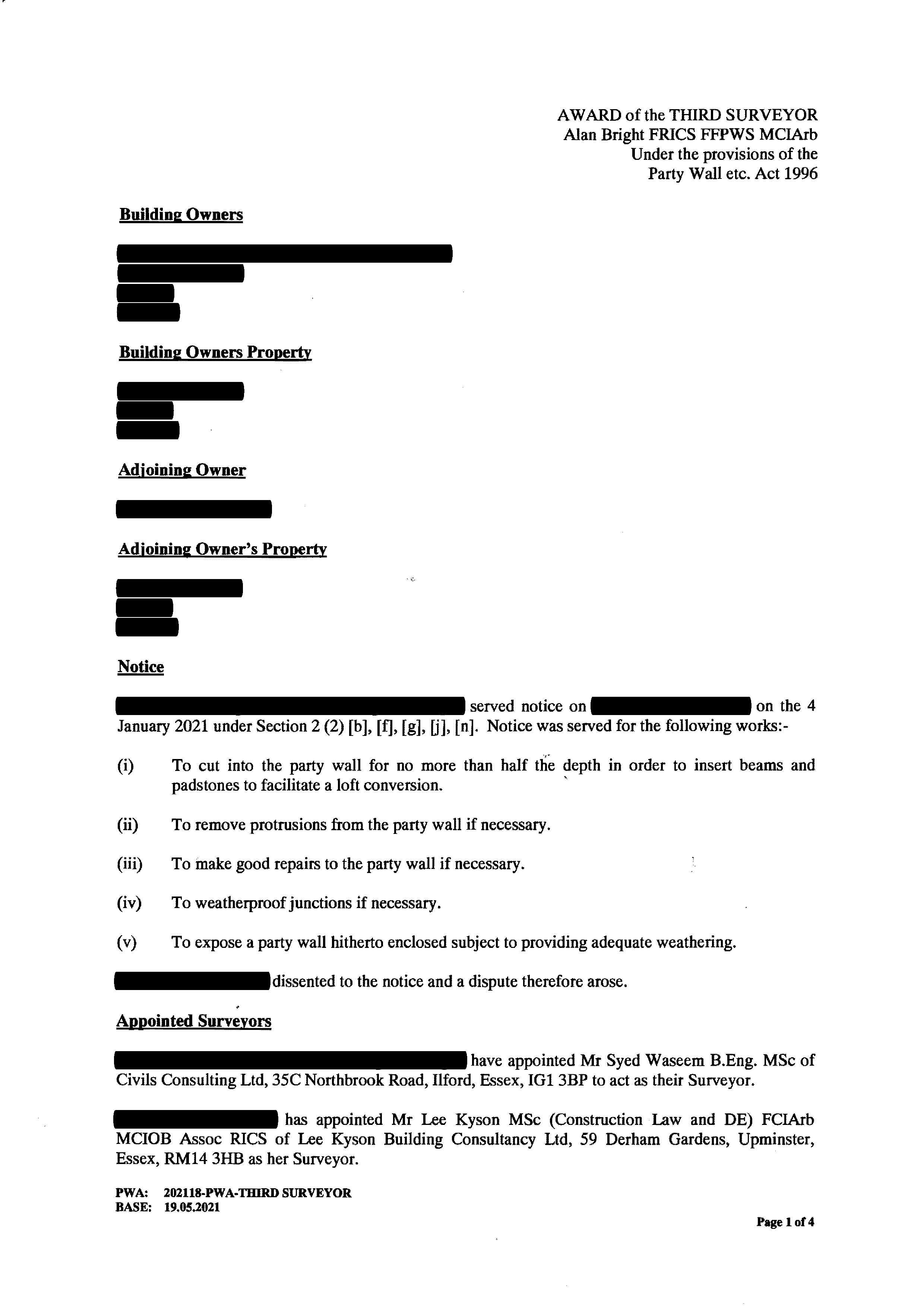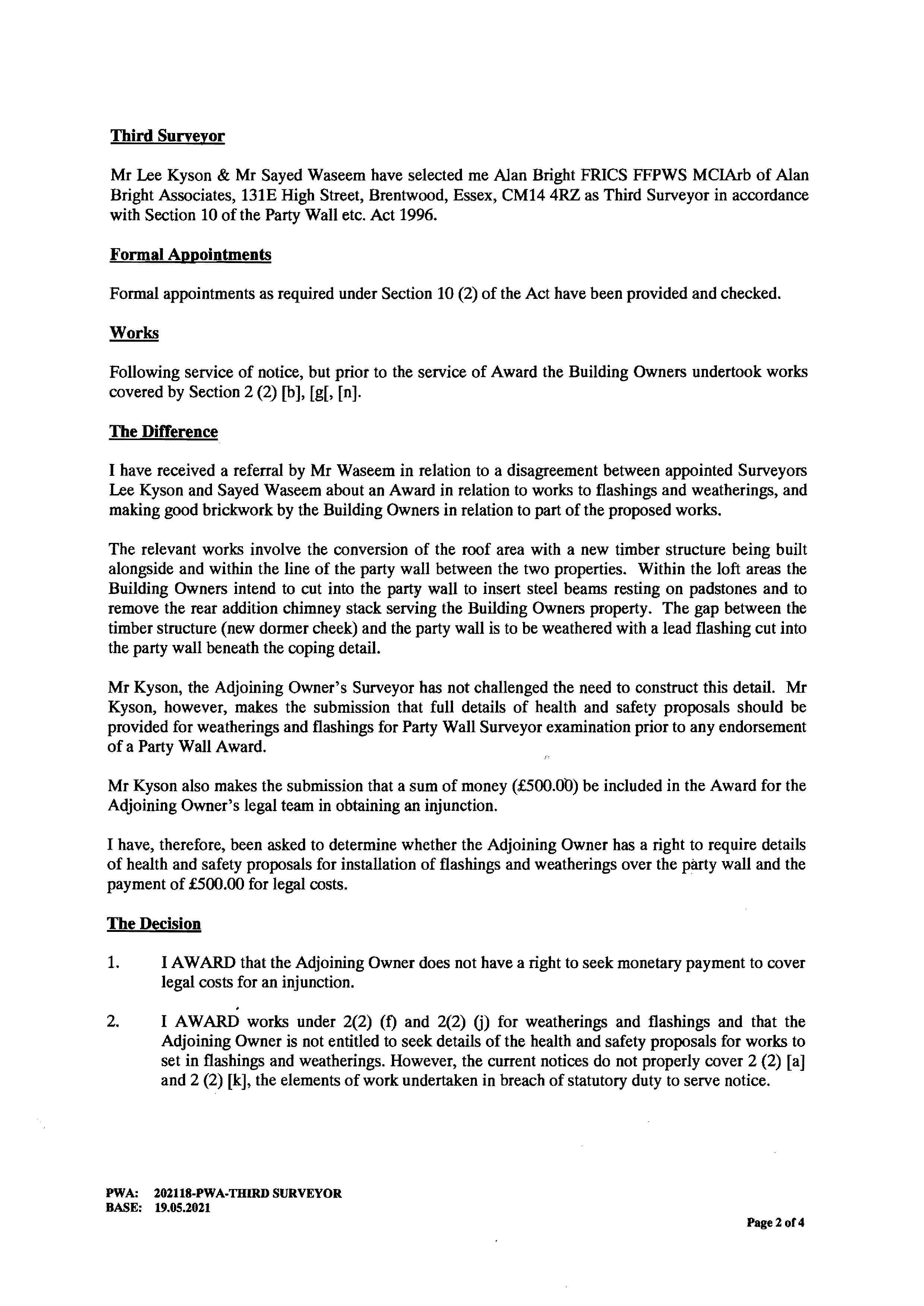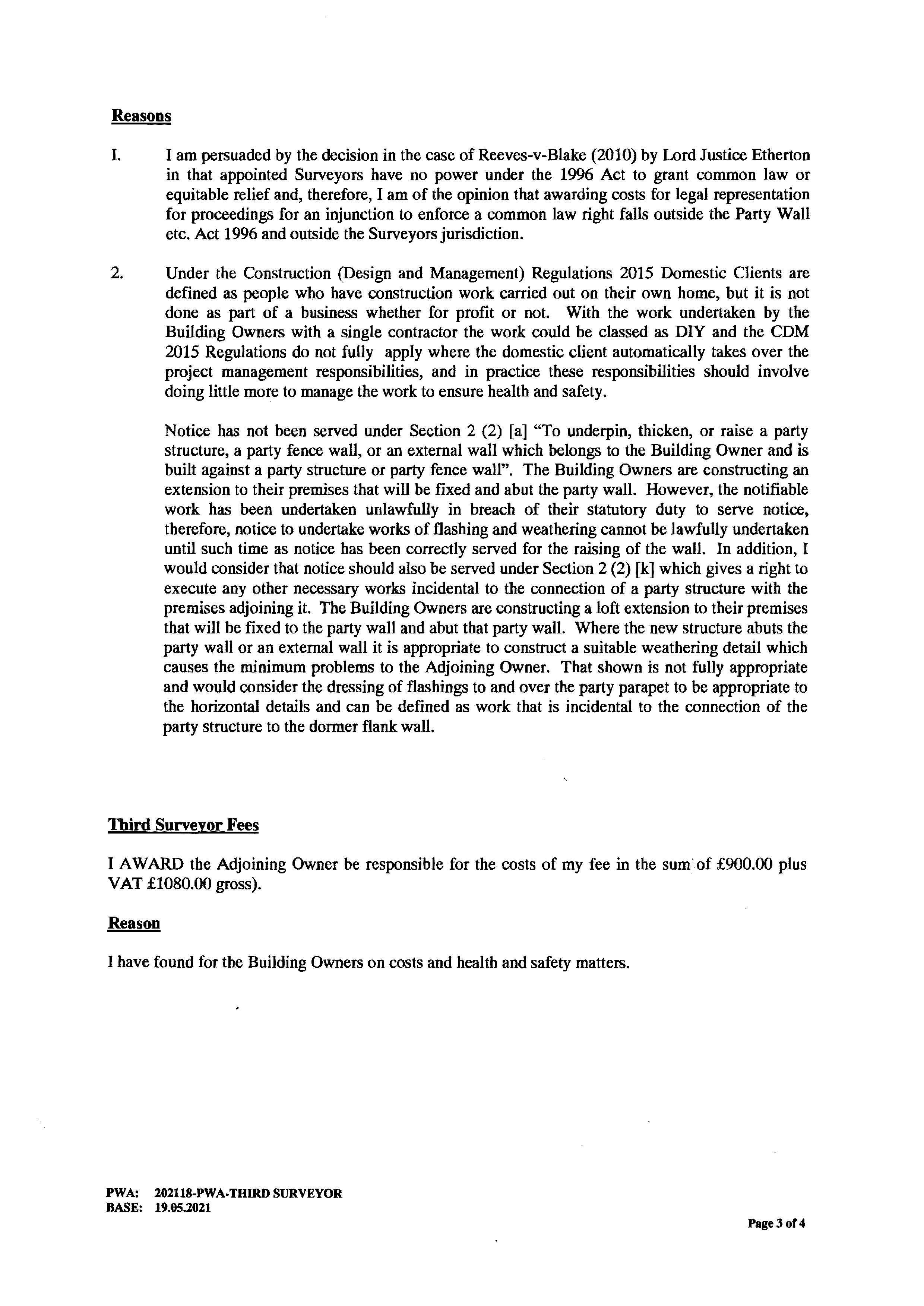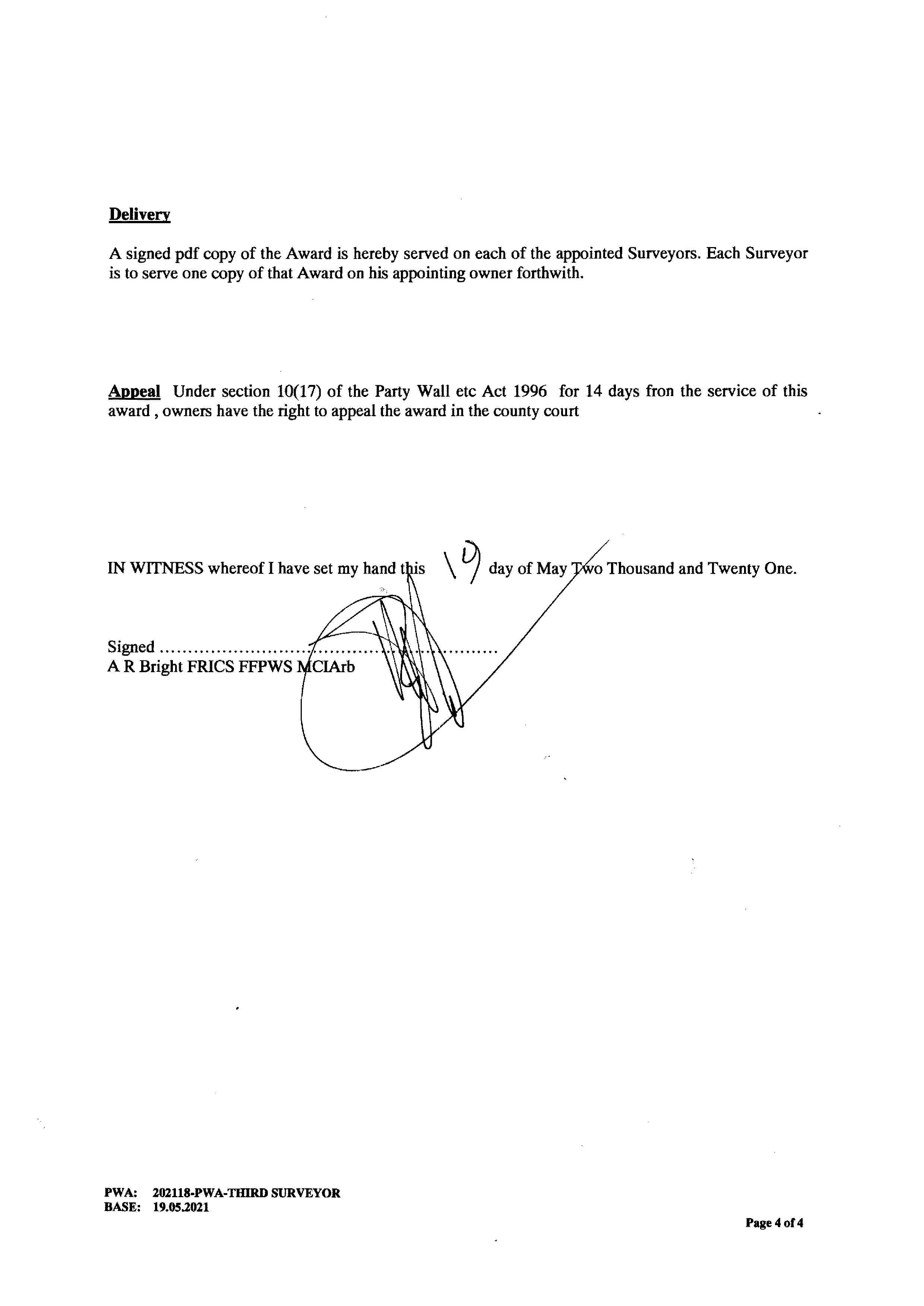⚖️ Health & Safety in Party Wall Awards: HHJ Lethem Upholds Third Surveyor’s Narrow Decision
📌 Background
A dispute arose over loft conversion works by a Building Owner (BO), involving the installation of steel beams, flashings cut into a party wall, and repairs to the wall following removal of a chimney stack. Crucially, these works were to be carried out from the Adjoining Owner’s (AO’s) sloping slate roof, exposing her property — and her personal safety — to significant risk from falling bricks, tools, and debris.
The BO commenced works before a party wall award had been finalised, causing actual damage and allowing debris to fall into the AO’s garden. No protective scaffolding, netting, or H&S measures were in place.
On 30 March 2021, Her Honour Judge Boucher granted an injunction to halt the works, which remains in force. The AO’s solicitor was directed to notify the Health & Safety Executive (HSE) due to the seriousness of the risks.
📝 The Third Surveyor’s Award
The matter was referred to the third surveyor, Alan Bright FFPWS FRICS MCIArb, director of Alan Bright Associates and a board member of the Faculty of Party Wall Surveyors (FPWS). The referral came from the BO’s surveyor, Syed Waseem (Civils Consulting Ltd).
Mr Bright’s award stated:
“I award works under s.2(2)(f) and s.2(2)(j) for weatherings and flashings and that the Adjoining Owner is not entitled to seek details of the health and safety proposals for works to set in flashings and weatherings.”
This ruling meant the AO’s request for details of H&S precautions was dismissed. Notably, Bright confined his reasoning to flashings and weatherings, ignoring the more dangerous brickwork repairs above the AO’s fragile sloping roof.
⚖️ The Appeal Before HHJ Lethem
The AO appealed. Significantly, on the advice of their barrister, the Building Owner’s legal team withdrew their defence to every challenged item in Bright’s award except one — the refusal to require disclosure of health and safety proposals.
This meant that all other elements of the award were effectively conceded as wrong. The only surviving issue was whether the AO could demand sight of H&S measures.
HHJ Lethem acknowledged that:
The AO’s concerns were genuine and serious;
Had he been acting as third surveyor, he would not have excluded the AO’s request for H&S details.
Despite this, the Judge refused to amend the award, citing the statutory finality of a third surveyor’s decision under s.10 of the Act.
❗ Overlooking s.10(17)
This reasoning is problematic. Section 10(17) of the Party Wall etc. Act 1996 expressly empowers the court to:
“Either of the parties to the dispute may, within 14 days of the service of an award upon him, appeal to the county court against the award and the county court may rescind the award or modify it in such manner as the court thinks fit.”
By ignoring this provision, the Judge allowed a flawed award to stand, despite openly acknowledging he would have reached a different conclusion. In practice, the court could quite easily have amended the award to require a method statement or protective measures — a simple adjustment that would have safeguarded the AO without undermining the surveyor’s jurisdiction.
🔎 Issues with the Award
Several points of concern arise:
Failure to Address Core Risks
The award ignored the fact that works were to be carried out from the AO’s sloping roof, where debris had already fallen and posed a life-threatening hazard.
Procedural Shortcomings
Bright indicated that submissions would be invited but issued an award without joining with the BO’s surveyor or considering full evidence.
Statutory Contradictions
Bright awarded works under s.2(2)(f) and (j) yet also suggested notices under s.2(2)(a) and (k) were required.
He appeared to classify the dormer as “raising a party wall” (s.2(2)(a)), though this was not in issue.
Paradoxical Reasoning
He awarded flashings despite admitting the design was inadequate.
Costs Confusion
The AO’s legal advice costs (£500 + VAT) were mischaracterised by Bright as relating to the injunction, despite the clause clearly linking them to advice on party wall matters.
Mislabelled ‘DIY’ Works
Bright described the loft conversion as “DIY,” a position rejected by the court and inconsistent with Alcock v Wraith (CA), which confirms that even modest intrusions onto party walls or roofs carry statutory obligations.
🏚️ Consequences for the AO
The AO remains in an untenable position. Without a method statement or protective measures, she cannot safely use her garden — effectively a prisoner in her own home.
A draft amendment by the AO’s surveyor, Lee Kyson, proposed requiring the BO’s contractor to:
Submit method statements detailing protective H&S measures;
Explain how debris would be removed from the AO’s roof;
Obtain surveyor approval (not to be unreasonably withheld).
This would have safeguarded the AO while allowing the works to proceed.
📢 Commentary
This case highlights a troubling imbalance. On one hand, an injunction and HSE notification confirm the works posed real danger. On the other, the statutory mechanism for awards was applied in such a rigid way that safety was sidelined.
By failing to apply s.10(17), HHJ Lethem effectively tied his own hands, even though Parliament expressly provided the court with discretion to correct defective awards. The result is both legally inconsistent and practically dangerous.
The practical effect is alarming:
Works requiring access to the AO’s fragile roof are permitted;
The AO is denied sight of safety measures;
And the courts decline to intervene despite having statutory power to do so.
The fact that the BO’s own barrister advised conceding every other point underlines how indefensible Bright’s award was. Yet the single most dangerous issue — health and safety — remains unresolved.
The question remains: is it FPWS policy that adjoining owners cannot request safety information, even when their own property is the working platform? If so, the implications for practice and public safety are severe.




